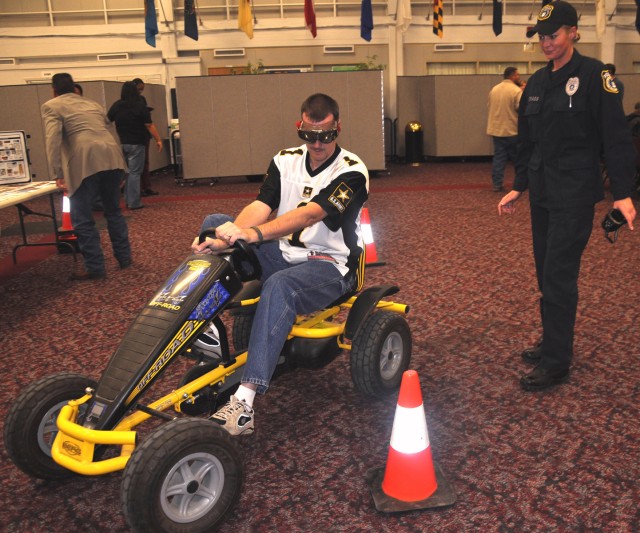FORT SAM HOUSTON, Texas -- More than 200 pairs of eyes were focused like laser beams on the graphic images shown on the screen.
The rapid-fire delivery of photos and videos taken from the aftermath of deadly auto accidents lasted just a few minutes; but its effect would last much longer for the Soldiers, Airmen and civilians gathered for the Street Smart safety presentations at the Roadrunner Community Center Nov. 19.
Some winced, others turned away momentarily as horrific scenes from violent crashes and morgues unfolded, backed by a soundtrack of actual paramedic calls.
The double-barreled onslaught drove home the point that taking risks and making bad decisions can have a lifelong effect on them and their loved ones.
"We're not showing these images because we like grossing people out," said Ronny Garcia, a certified paramedic, former firefighter and training coordinator from the Tampa Bay chapter of Stay Alive From Education, which created the Street Smart presentations.
"We're talking about what we do for a living, what we see on a daily basis," Garcia added. "It's not just someone reeling off facts and figures. We show them that if they make bad choices, this is what will happen, this is what we see and this is what we'll do."
Thanks to a grant from Anheuser-Busch, San Antonio-based Silver Eagle Distributors brought Garcia and Greg McCarty, longtime paramedics from Tampa, Fla., to walk the crowd through what happens at a trauma scene, using medical equipment they employ daily in their jobs.
"Every picture you just saw - either the victim wasn't wearing a seat belt or drugs and alcohol played a part in the crash," Garcia said. "What you saw was real people and real death."
After numerous photos of horrific car crashes and the victims, McCarty and Garcia used a live model to get the message across. They grabbed Airman 1st Class Chris Kilbourne from the 502nd Logistics Readiness Squadron and re-enacted an accident, going step-by-step through the procedures that paramedics use on scene.
As they took Kilbourne's pulse, loaded him onto a backboard and simulated an IV-line or catheter insertion; the audience saw what it's like to try to save a life and what it's like to be the victim.
They also saw how some of the equipment is used at an accident scene - often without anesthesia.
"We always hear that this was the first safety briefing people have ever seen that they didn't make them want to go to sleep," Garcia said.
"This was a good crowd today. They were listening and gathering information. They're not talking to the person next to them, or texting on their phones or nodding off. They were focused, from the front to the back."
McCarty also asked for a show of hands of how many people didn't wear their safety belts every time they got into a vehicle. About a dozen or so hands went up.
"Going around the country doing this, we've heard every possible excuse there is for not buckling up," McCarty said. "People will say, 'I'm just going around the corner' or 'I drive a big car' or 'the airbag will protect me.'"
"It takes me back to learning about Newton's law of motion that states, 'a body in motions tends to stay in motion, unless acted upon by an equal or greater force,'" Garcia said.
"When your car, doing 45 miles per hour, hits the back of a dump truck; the car stops moving. However, your body keeps moving and if you're not wearing a seatbelt, you will keep moving right through the windshield or getting impaled on the steering column."




Social Sharing